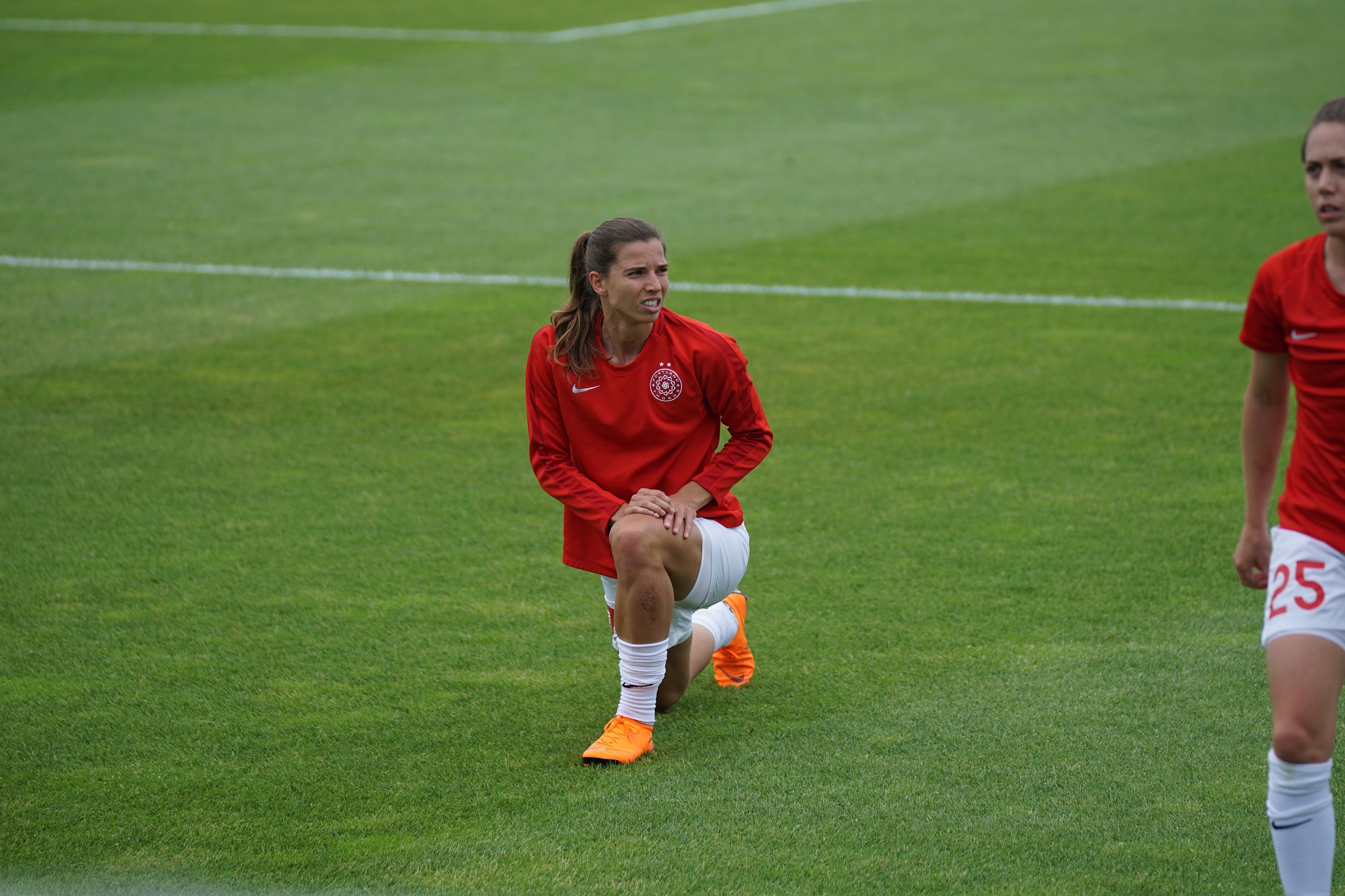
Suddenly changing direction or doing intense twisting movements can result in many muscle strains, especially in the lower abdomen and groin area. But, is the strain just a pulled groin or sports hernia? Here’s how to tell the difference.
It’s one of the most painful moments of any athlete’s life. Doing a fast cut over during practice or twisting too much to avoid another player, suddenly you feel a sharp pain in your inner thighs and up into your groin. At first, you try to brush it off and continue on, but it doesn’t take long before squatting, running, twisting, and changing direction become difficult. Even walking becomes painful. Clearly, you’ve strained your groin – but, is this strain just a pulled groin or sports hernia?
Pulled Groin Or Sports Hernia? Which Is It?
Both a pulled groin and a sports hernia have similar symptoms. They both result in pain in the inner thighs up towards the groin. Both injuries result in pain that prevents you from moving normally while playing your sport. The pain can be so bad that it makes it difficult to walk up steps or walk at all.
Yet, pulled groins are a different injury than a sports hernia and require different treatment as well as prevention techniques.
Both injuries are common in sports that require a lot of single leg pushing or cutting such as basketball, soccer, football, figure skating, hockey, and skiing. Furthermore, they also are the result of putting too much stress on the muscles of your groin and thighs – muscles that are already in a lot of stress from the demands of your sport. Usually, they occur when the muscles are already tense, and you forcefully over-stretch the muscles or engage them too suddenly. This results in a strain or a complete tear.
Groin Pulls (Or Strains)
Groin pulls are quite common in soccer and hockey players, accounting for up to 10% of all injuries in those sports and up to 5% in all other sports. Even though a groin pull can happen accidentally, it’s also related to hip muscle strength, conditioning, warm-up routine and flexibility, and previous injury.
A pulled groin (or groin strain) is like any other muscle strain. It’s when you tear or rupture one of your groin muscles during movement. The most common groin muscle strained is one of the hip adductors, which is usually the adductor longus. However, a pulled groin can also happen in any of the adductor muscles – adductor brevis, longus, magnus, pectineus and gracilis.
The Symptoms of a Strained Groin:
- It’s difficult to life your leg and walk upstairs.
- You have pain and tenderness in the groin, which usually first occurred suddenly while moving.
- When you stretch your groin muscles, you have pain.
- It’s painful or difficult to squeeze your thighs.
- You have pain when walking to the side.
Your treatment depends on the severity of your strained groin, which is broken into three grade levels.
- Grade 1 – a mild injury, which takes up to two weeks to heal.
- Grade 2 – a moderate injury, which affects your ability to move and play your sport and can take up to 10 weeks of recovery.
- Grade 3 – a severe injury that most likely will require surgery and take several months to heal completely.
Sports Hernias
Sports hernias mimic the symptoms of a pulled groin, yet they are a separate condition of the groin muscles. Essentially, if you have a chronic pulled groin, chances are that you have a sports hernia.
A sports hernia is a core muscle injury where your abdominal wall is weakened and torn from repetitive strain and stress. The tears are particularly concentrated in the muscles surrounding the hips, such as the groin. According to the American Physical Therapy Association,
Repetitive hip and pelvic motions typical in sports can cause injury to the lower abdominal area. Imbalances between the hip and abdominal muscles can, over time, cause overuse and injury. Weakness and lack of conditioning in the abdominals also might contribute to the injury.
The Symptoms of a Sports Hernia
- You have chronic groin pain, or seem to constantly “pull your groin”.
- You have pain while doing abdominal crunches.
- It’s painful to run, spring, cut, pivot, kick or twist; it’s a sharp pain concentrated in the groin region.
- Like a pulled groin, it’s usually isolated to one side of the groin.
- Pain radiates down into the inner thigh and may even occur with coughing and sneezing.
Sports hernias are very similar to pulled groins, but the biggest differences are that it chronic groin pain and pain is felt in the abs as well.
Treating And Avoiding Strained Groins And Sports Hernias
Treating and preventing strained groins and sports hernias follows that of any muscle strain.
- Use the RICE treatment.
- Avoid movements that cause more pain in the area until your groin is fully healed.
- Gently stretch the area and eventually strengthen it.
- See a specialist that can help you both recover from your pulled groin and prevent it from happening in the future.
- Do a dynamic warm up before activity to prevent extra strain.
- Work on range of motion and correct posture during each and every movement.
Like any injury, strained groins and sports hernias need time to heal. It’s particularly important to allow your body time to recover from a groin strain and sports hernia. If you don’t recover fully, you’re more likely to injury it again.
Related Content:
Sprains, Strains, and Muscle Tears: The Complete Guide
The Difference Between Sprains & Strains


